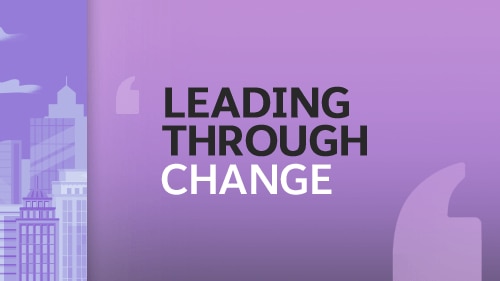Transportation workers have emerged as heroes during the COVID-19 global pandemic as they risk their lives daily to provide essential services to the public. But even before the crisis, these employees were vital to keeping the supply chain stable.
The logistics workforce is essential to ensure important supplies like food, medicine, and PPE are delivered. They are also the engine that keeps the normal part of the supply chain running. And in order to keep the supply chain stable during crises and beyond, it’s critical to evaluate how we engage logistics workers from hire to retire. This examination comes at a pivotal time in which industry leaders look for solutions to help relieve the pressures of an impending workforce shortage.
We will focus on the truck drivers as an example, but this applies more broadly to the entire logistics workforce.
Alleviating workforce shortage
Trucking companies nationwide are about 60,000 drivers short and growing, and driver shortages could reach six-figures by 2024. There are three things now that we can do to ease the strain of a workforce shortage — and it starts with using technology to better engage current and future employees.
The transportation and logistics industry is experiencing a generational shift that will change how we interact with drivers. The National Transportation Institute (NTI) reports that retirements account for 54% of the driver shortage, which means that we will need to find ways to not only attract younger drivers but also keep them engaged throughout their careers. Millennials and Generation Z will play a significant role in the future of the industry, and it’s important that we reach them on the channels they prefer.
By incorporating technology throughout the entire driver journey, companies can do three things better:
- effectively recruit and onboard the best drivers
- provide drivers with the skills and support they need, and
- address feedback and predict driver attrition
Here’s how you can do it.
1. Effectively recruit and onboard the best drivers
Recruiting the right drivers requires attention to not only who is being recruited but also how they’re being recruited.
When it comes to who is being recruited, transportation and logistics companies should consistently focus on expanding their reach with drivers belonging to a variety of demographics, but young drivers, in particular, are important. According to NTI, the average age of an experienced driver is 54, and the average age of new entrants is 38. There is an opportunity to target a much younger demographic — like millennials and Generation Z — and lengthen the career of the average driver and their tenure at your company.
And with recruiting a younger demographic, you’ll need to focus on how you’re engaging them. Younger generations are more familiar and comfortable with digital channels than other generations, and it’s important to attract talent on the platform in which they are accustomed to. This means shifting your recruitment strategies to ensure your advertising is more targeted, which can also help with reaching more underrepresented groups. This may also mean using technology that allows recruiters to better track your candidate pool and prioritize candidates who meet your requirements.
Meeting new candidates on new channels will not only lower the threat of a driver shortage over the next decade, but it will also help increase your pool of potential employees and bring you one step closer to finding the right qualified drivers.
2. Provide drivers with the skills and support they need
The role of the driver in your customer’s journey is quite significant, considering that the driver is the only physical touch point carriers have with their customers. The driver can easily impact how happy or dissatisfied the shipper or the buyers will be. For this reason, training drivers to interact with customers in a manner that’s consistent with your business is crucial.
In order for drivers to get on the road, they must first complete training that demonstrates their knowledge of laws, road safety, company values, and more. Training can take place in many forms, but the industry is seeing an increase in the use of gamification for driver education. Using this technology often makes training more engaging and rewarding, as drivers can receive additional honors and certifications for their achievements. By giving drivers access to this type of instruction, they are truly set up for success when they’re on the road. They have the tools and confidence they need to deliver goods safely and interact with customers successfully.
Once the driver is on-boarded and trained, staying connected and providing support while they’re on the road is critical to their success. By using an app like the Supplyforce Bot for Supply Chain Resilience, transportation and logistics companies can connect with their network of drivers in real-time via SMS and WhatsApp. With this solution, driver supervisors can respond quickly to field requests, and dispatch centers can also monitor driver disruptions by better analyzing occurrences such as driver productivity decline, abandoned freight and resource shortages.
Using technology to engage drivers after they’ve been hired not only helps with improving supply chain resiliency, but it also helps improve employee accuracy and efficiency, customer satisfaction and company revenue.
3. Address feedback and predict driver attrition
Effective feedback will be an important aspect of the employee experience as drivers begin to progress in their roles. It provides managers the opportunity to guide their employees to make better decisions, and it also serves as a springboard for celebrating driver success. For the driver, feedback provides the ability to make their managers aware of any challenges that have come up or the chance to share their thoughts on why they think their manager or company is doing a great job.
Incorporating technology in this process can be helpful, especially when your feedback can be validated with dashboards that provide key performance metrics for your drivers. Driver supervisors can monitor these metrics to evaluate performance more quickly, making it easier for managers to understand when their employees need additional support and training or special recognition for a job well done. As a manager, you may have an inkling about a driver’s performance, but by taking a look at data, you can get a clear snapshot of how your employee is performing based on key performance metrics. Technology like this can also help managers predict attrition, allowing them to proactively put plans in place to address driver concerns or begin the recruiting process with new candidates.
Supply chain resiliency relies in big part on the workforce. By investing in technology, transportation and logistics companies can not only help keep the supply chain stable but also decrease employee turnover. And with Salesforce Customer 360, you can more efficiently manage your workforce from hire to retire.
Learn more about staying connected to employees, employers, and your supply chain trade network partners anytime, anywhere, on any device and on their preferred communication channel.




























